Leaderboard
Popular Content
Showing content with the highest reputation on 06/16/23 in all areas
-
4 points
-
Yes, just use the new spring as-is. The separate bridle came about in the early days of automatics when there weren't many springs specifically for automatic barrels. Be sure to use braking grease on the barrel wall.3 points
-
1972 Tissot Seastar 2511 I picked this up off the bay for my 60th bday coming up next month. I went out on a bit of a limb as the lot had no pictures of the movement. It did however show an original case, bracelet, signed crown, and awesome dial. It is a non runner, but I am hopeful that it is not to difficult to diagnose. It winds almost too easy and is a bit sticky on the setting though the calendar works is fine and the push quick date set is also fine. I hope it is a loose screw on the ratchet wheel or something that is not allowing a wind into the mainspring as the balance spins quite easily with a blower. As no pix of the movement in the lot description I was hoping for a 784-2, but very surprised and happy with the 2511, which is the same as the Omega 1481! 20 microns gold plate in great shape, case with sharp lines and drilled lugs. You can tell I am quite smitten at the moment. No scratches on the movement or screws, the rotor doesn't seem to have play. I will take my time on this one and ease my way into this as a practice run for my eventual foray into my grandfather's Omega Constellation pie pan with a 561.3 points
-
In 2020 a small property went for sale in my small town. It was nothing more than an agricultural warehouse without even a firm floor, made of piled up blocks and with an uncertain roof. But the price was right, and during that time having a project or a reason to leave home was an attractive perspective, so I bought it. The ugliness was demolished, foundation and construction quickly started. By Christmas '21 most work was completed, minus doors and windows, the exterior, electrical, plumbing and what not. I took my time to refine it the way I wanted, and last summer I was using it already for what you see, an hobbyist machinist and general repair and 'making' work. The building is actually designed and intended to be a small home, by regulations is resistant to earthquakes and highly energy efficient. I plan to add solar panels and an accumulator as soon is convenient. Heating/cooling will be with a split Inverter A/C, with floor units in each room. I haven't installed yet because in our climate and the efficient insulation one does well even without it. I've arranged the unit for the purpose of doing stuff for my own interest and business, as well to service the local trade which may need turning, milling, sharpening, and the like. There is virtually nobody else doing that for quite a distance around. Above is the garage room, the leftmost in the first picture. Everything is on castors, so beside re-arranging as I want, I can also store a medium car in there. Currently I'm about to restart a vintage universal milling machine (the dark grey one), which has suffered a road 'accident'. Also a largish vintage lathe is supposed to be coming and be restored to working order. The other room with the entrance door is predisposed to be a kitchen and living room. This space is better suited for light mechanical or electrical work, studying and designing. In the middle on the left is an half bath with mezzanine storage above it, and on the back is a large bedroom and a spacious full bath. These are still unfurnished, so no pictures. After much fighting, I managed to get basic ADSL Internet, so I can also watch Youtube videos, buy more stuff, or conducing other online business. Still there are so many details that I want to add or improve, but all in all I feel well rewarded for the time and money spent. Time goes fast and for as much work one does, there is always more. I have few machining projects lined up, and hope to get more also. Because of all that I had to place watchmaking on the back burner for now, but have no intention of quitting it. I want to thank the forum friends that had asked about me, and send friendly regards to everyone.2 points
-
Watch naming and/or numbering schemes are often filled with ministries like everything else in horology. I've attached the technical specifications for the 992B and noticed that it's basically an entirely new watch. So basically I like the second generation to the 992 but it's entirely different the only thing they share in common is their both 16 size railroad grade watches. While looking for an answer to question I had which is our all the watches they make really really nice or just a few? In any case there is a link that talks about the 7001. https://wornandwound.com/caliber-spec-peseuxeta-7001/ Thinking of chronometers there is an agency that does that. Then as you can see from the second link they have annual reports except their missing the 2015 report. The 2015 report is interesting because it gives something of that they probably really didn't want to share with the public. On pages 12 and 13 of that report which I'm attaching down below it lists all the companies who got their watches chronometer certified. So basically could see all the companies are making high grade chronometer watches and we get to find out how many watches Rolex makes in a year which I'm not sure if that's actually published anywhere? https://www.cosc.swiss/en https://www.cosc.swiss/en/news RANN2015-1 pages 12 and 13.pdf2 points
-
This is one I've been chasing around eBay for a while. It's so perfectly 70s weird. Bidding didn't go as high as I expected, so here's hoping it's not a scam! As far as I can tell it looks correct. No pictures of the movement, but the seller seems reputable so I took a chance. Winging its way across the pond from the UK, so we'll know in a couple weeks.2 points
-
They had a specific caliber for chronometer competitions, the 260, which is a legendary watch. Those are quite hard to find (and very expensive), but all the other movements of theirs that I've worked on have just been superb runners, great timing, great no-frill quality. Can't believe I didn't mention Zenith- who also made a competition-specific caliber, the 135. All of their hand wound calibers I've seen have been fantastic.2 points
-
Some watch makers would mark the balance if the hairspring was removed, this was done so when it was replaced it would be in the same spot so there would be no need for beat setting. It is a thing that I did only on the top of the balance, but not big marks like that.2 points
-
Back in the day movements were finished in batches, so certain parts would get marked to be sure they stay with their piece. A watchmaker might have a compartmented box with 5 or 10 divisions, with smaller divisions in each, for that number of movements. I've seen the markings on pieces that should be later than when things were done so artisanally, but I think in the final stages of finishing and timing in many companies they continued to work in batches. Well, many still do, but with workbenches that hold 50-100 movements on a chain drive actuated by a knee switch, that must be a nightmare job!2 points
-
Well, since my first post I have worked my way through a lot of watches, dead and alive. I can't say I actually fixed any of them, although I've brought some back to life. I have found I love working on the tiny ladies cocktail watches. It's amazing to me how anyone thought of the means to engineer and produce such lovely precision timepieces! TALLY: Hairsprings destroyed: 4 Incabloc or other suspension springs lost: 3 Springs shot into low earth orbit: 9 Springs successfully recovered from low earth orbit: 8 Bergeon screw driver tips broken: 1 Amount of fun learning a new hobby: immeasurable!2 points
-
I'll defer to oldhippy to comment on virtues of vintage Timex. The Ben Hogan is the one that would draw attention from collectors. But it looks like it is already in pieces. Is the stem crown still there? Have at it with the others. Be warned that you will enter into the forbidden realm and may not come back!1 point
-
I know a lot about precision and accuracy. My question was to the original poster what do you consider as extremely accurate.1 point
-
Why the hell would anyone want that ugly looking watch.1 point
-
@mikepilk examine pinion leaves on any Peseux manual wind, you'd know it is no ordinary train gear. ETA 7001 is copied off Peseux 7001, though haven't seen the ETA make, I doubt it is made as good as Peseux.1 point
-
Great points by all. Yes they are hard to assemble (as noted by Hector), but you will improve dexterity and handling small parts as rehagm said. I fixed a couple recently with some satisfaction--I guess because it looks impossible to assemble and then it suddenly comes together--satisfying. On the other hand, most Swiss watches follow a certain paradigm, so after you do a few and learn the architecture, you are more efficient working on other Swiss watches. Other than working with small parts, the Timex knowledge is not fungible for broader watch servicing, IMHO. They are cheap, so there is no downside to working on them.1 point
-
As long as the dial and bezel look ok, it's a keeper. I've worked on a few Timexes and I can say that it's not for beginners. Putting back a Timex back together can be really challenging for a beginner. But in defense of Timex, they are real tough watches. I've never seen a Timex with a broken pivot or twisted hairspring. There are no jewels to crack or lose. It will look terrible on a timegrapher but keep great time on your wrist. Timex... you either love it or hate it. Right? @oldhippy? @JerseyMo?1 point
-
1 point
-
Practising on a Timex for watchmaking is like practising on a motorcycle to fix cars. They are so far away from any regular Swiss style movements that most learnings and skills you acquire will not be transferrable... At least in my opinion. Also, Timex movements are generally hard to service as they are not made with servicing in mind, so not for a beginner! There are lots of people who like Timex and I don't mean to knock them, just pointing out that there are better movements to learn on and then graduate to the Timex ones if that is what interests you once you are are familiar with more standard movements.1 point
-
Typically with vintage American pocket watches you will find the serial number on all of the Plate components so that they can stay together it's also scribed on the balance wheel so that will stay with the watch. On rare occasions I've seen the hour and minute wheel will have the last two digits of the serial number but that's been very rare. This is because when they were manufacturing things are manufactured together versus today with the components to be manufactured separately and independent of the watch and then assembled at a later time.1 point
-
Could it be a number ( XIII = 13 ) that allows to identify a matched balance? If so you might find the same number on other movement parts.1 point
-
I guess some rather nasty way of poising the balance that had a heavy arm and then a correction .Only seen by another watchrepairer. Quick and effective but bodgy.1 point
-
Working on this OVIVO I picked up as part of a lot sale - didn't make it into the 404 club as it worked out to be $8.71. and looked in good shape: And I was very happy when I opened up the back as the movement looked like it hadn't been touched: And the dial was in even better shape BUT....... then I noticed the ratchet wheel have several teeth missing: And then I noticed that the click spring was missing and there was a lot of rust hiding under the ratchet and crown wheels. Fortunately I found a replacement ratchet wheel in my bag of spares and I fashioned a new click spring, I steeped the rusty parts in rust remover solution and they came up well, then off to the watch cleaning machine with my home made cleaning fluids. Next I assembled the train of wheels and everything on this side and all worked well, without any adjustment the amplitude close to 300 and rate was 1 sec/d with +/-5 beat error, very happy for this as a starting point, and all luck not skill. Will complete the dial side tonight, and put some of my new blue lume on the hands and then case up - hopefully there are no more hidden surprises, and I can post complete pictures tomorrow!1 point
-
Do you want just a movement or a whole watch? It would be really hard to beat one of the 30s- 60s Omega 30mm movements, here's a read. Anything from Longines up to the late 60s is amazing, for precision go for the larger calibers like the 30L. Peseux movements are pretty fantastic across the board, and there is a "current" one available from ETA, the 7001 (at least I think it's still in production). There are others, depends on what you can spend. An IWC with a caliber 89 movement is fantastic, but will cost a lot more than something with a Peseux movement. For pocket watch, the 992B John mentioned is probably one of the best movements ever made, with Hamilton's own Hamilton Elinvar Extra hairspring and stainless/ Invar ovalizing balance, it completely solved the residual middle temperature error.1 point
-
Are you sure you have used the correct length screw in its right place.1 point
-
Lol i have enough unused dust gathered tools already. I think the watch repairers code here applies, " I wont tell your wife if you dont tell mine " . What happens in the watchroom stays in the watchroom, we all need to stick together on this.1 point
-
Here are my watches. My favorite one is the 1954 gold capped Omega automatic seamaster cal 354, case 2767-1sc. It has been recently restored.It s a family heirloom. The Hamilton Khaki field 42mm is the watch that I wear daily. The Seiko Chronograph is the watch I put on when I am messing around. The new member of the family is the Wolbrook skindiver 34mm. it needs a new click spring but it looks good! I fell in love with the watch when I came across this new kickstarter project:1 point




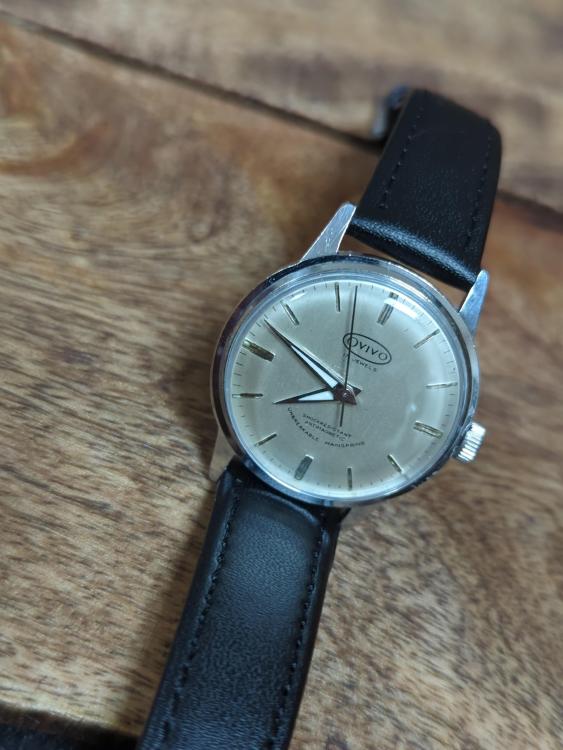


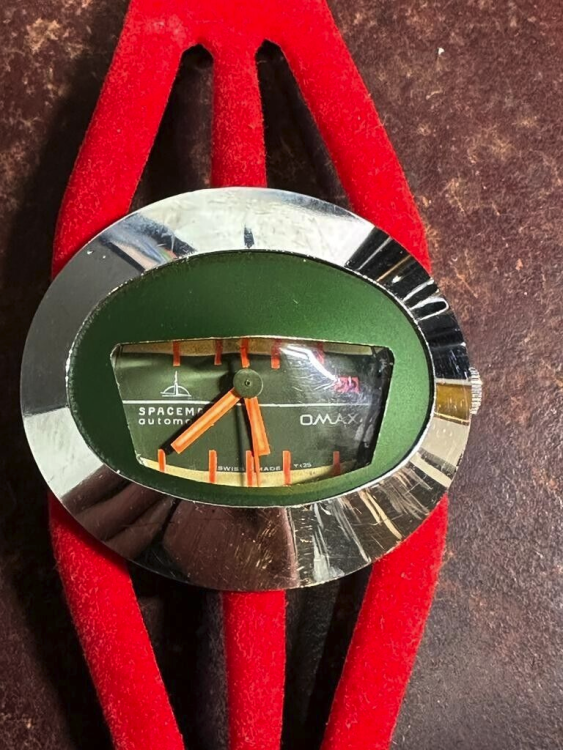






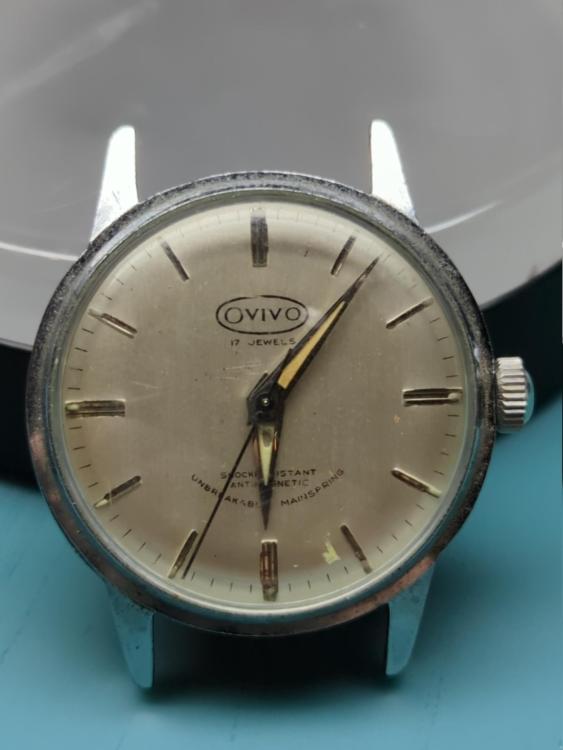
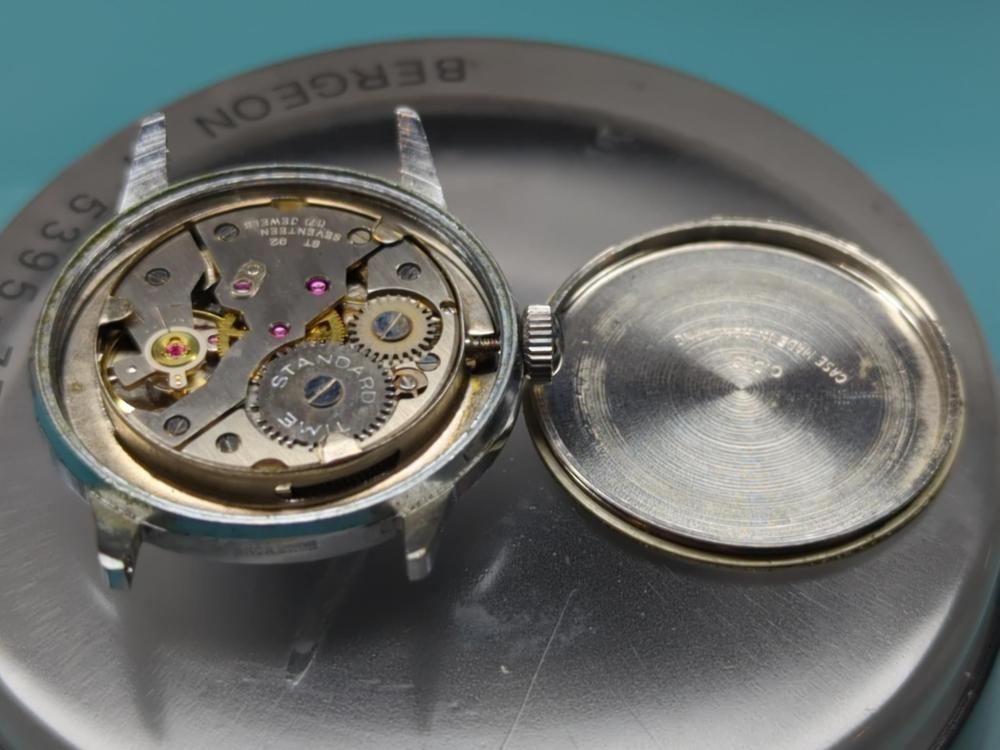
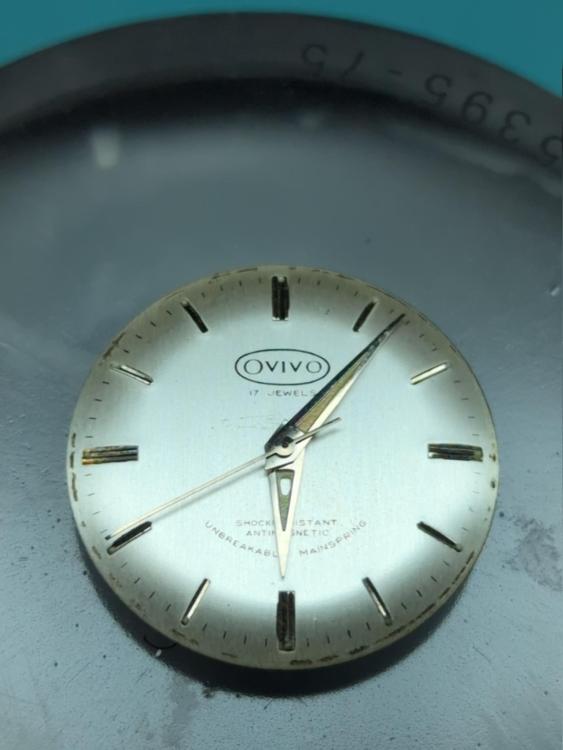
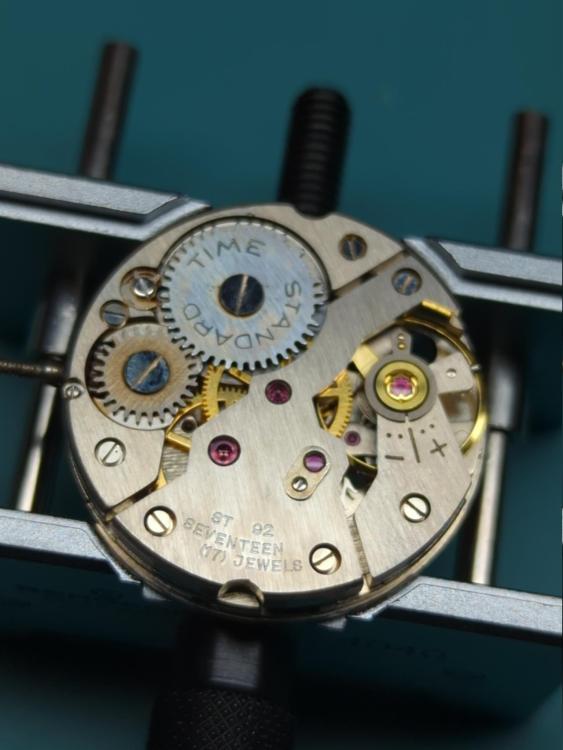

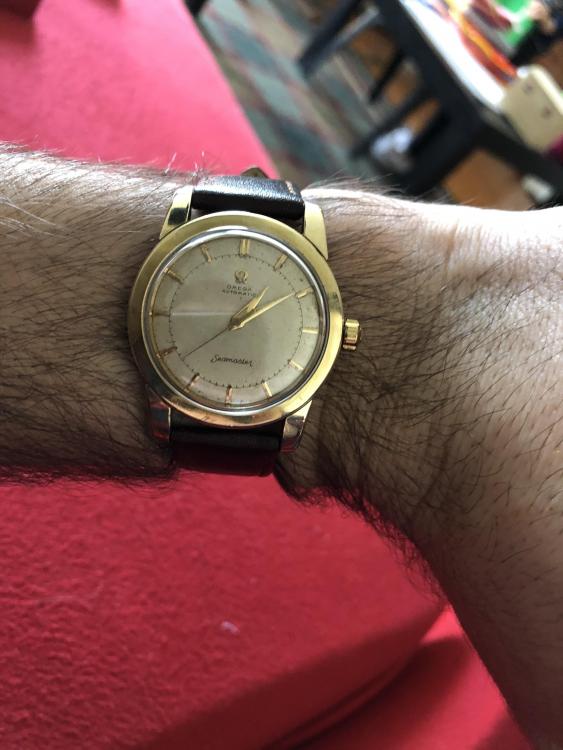
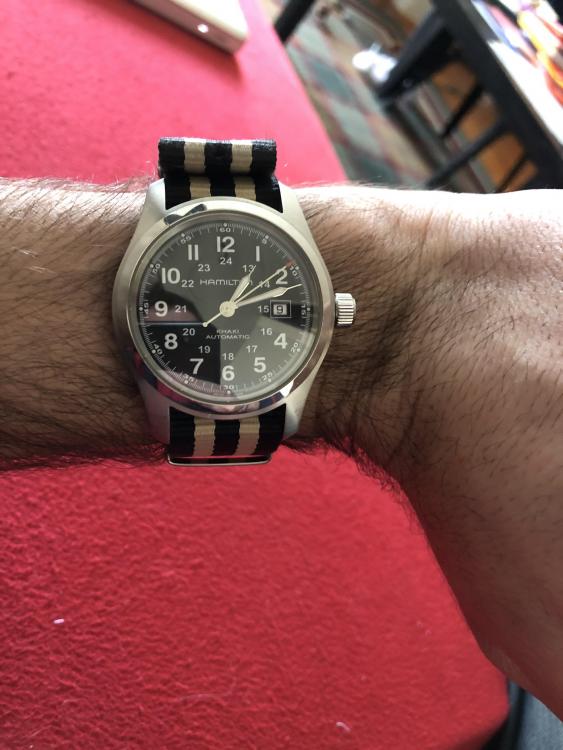
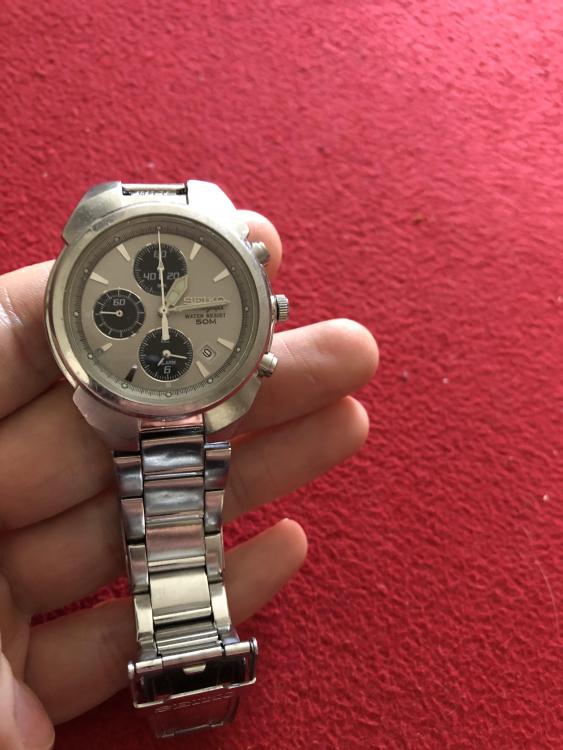
.thumb.jpg.51643a41f5b128c3bb1981272208295d.jpg)